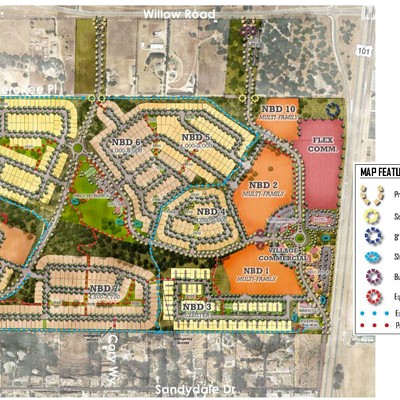Sammy Roth, the reporter who covers energy issues for the LA Times, recently had occasion to express the received wisdom on how energy must be generated and consumed in California.
Roth recited the accepted wisdom in the July 13 edition of his newsletter (“Boiling Point: Peek inside Diablo Canyon”). Roth, like many of his colleagues, subscribes to TINA (There Is No Alternative) for both nuclear power specifically and the utilities’ centralized energy model. Replacing Diablo Canyon with renewable energy sources, he cautioned, “would require the U.S. to build even more solar farms, wind turbines, and batteries.” But “the more nuclear we’ve got on the grid, the fewer solar and wind farms we’ll need.”
Nowhere in his article does Roth mention a third option. Neither did Gov. Gavin Newsom when he announced that “California will build an unprecedented amount of new utility-scale clean energy resources” by 2045 and spend an unprecedented $7.3 billion on transmission line construction.
A growing number of dissenters have something to say about the received wisdom that the path to our energy future is paved with centralized power and long-distance transmission lines.
As The New York Times recently put it: “Most electric utilities view distributed energy—technologies owned by customers that generate electricity in smaller amounts—as a threat to their business. They have tried for years to stop their customers in many states from investing in rooftop solar by rigging rates to make it less economically attractive. They’ve also funded opposition to policies that would speed clean energy.”
Hence the persistent legislative failure to reform the century-old investor-owned utility (IOU) model.
But Kenneth Sahm White, a consultant in energy policy and development, says that “building shorter transmission lines within California to make use of in-state resources instead of spending much more to build much longer transmission lines reliant upon more distant resources is certainly sensible. Even more sensible is making full use of even more local resources that do not require any transmission lines at all.”
“Newsom’s plan neither acknowledges nor provides investments or programs for communities to develop local renewable resources to address their energy and economic development needs” says Al Weinrub, coordinator of the California Alliance for Community Energy and author of Energy Democracy: Advancing Equity in Clean Energy Solutions.
Energy consultant Robert Freehling notes that “today’s solar panels average 20 percent efficiency, which increases the potential to over 80 percent of California’s electricity consumption. Parking lots could add about another 15 percent.”
Chuck Rosselle, an energy industry veteran and former federal energy regulator, says any city in California “with a municipal utility could immediately begin building microgrids and VPPs [virtual power plants].” And take note: “Any CCA [community choice aggregation], which already has the bulk of the skills necessary to support municipalization, could cost effectively support the development of and eventually partner with infrastructure-focused local municipal utilities. Together, they could begin to develop stand-alone, isolable community microgrids or VPPs on a regional basis.”
And if they did, they would “beat the cost of IOU power hands down. The small city of Gonzales has created a municipal utility with a well thought through plan to create a resilient community microgrid that pencils out at $0.21 [per kilowatt/hour].”
Gonzales, population 9,000, is located halfway between Soledad and Salinas on the 101. In October 2020, the California Energy Markets website reported that Gonzales had signed a 30-year energy services agreement “to develop a microgrid that will serve the Gonzales Agricultural Industrial Business Park and assist the city in meeting its climate action plan targets.”
Former Gonzales City Manager Ray Mendez said that most CCAs have “not even scratched the surface in the potential for making community investments—whether in microgrid development, job creation, or other economic development projects.”
Mendez advises other communities that grasp the benefits of microgrids to “look to tangible, manageable areas that can be ‘carved out,’ whether it’s a light industrial development, an airport, or some other definable geographic area.” A local CCA could manage an aggregated package of microgrids.
On July 7, San Diego joined the microgrid movement. Other projects are sprouting up across California, courtesy of the Clean Coalition’s Community Microgrid Initiative, dedicated to providing communities with “an unparalleled trifecta of economic, environmental, and resilience benefits.”
Robert Freehling is succinct on the question of whether distributed solar and microgrids will finally get their day in the sun: “Whether or not this happens is just a matter of policy preference, rather than technical limitations on the amount of local solar that could be developed.”
The question for [the Central Coast]: Are you willing to keep pouring money into a 100-year-old, environmentally detrimental, frequently bankrupt, blackout-prone, wildfire-triggering monopoly utility business model, or would you prefer something that actually could address community energy needs? Perhaps you’d like some energy independence and energy resilience, at a lower cost? If so, President Joe Biden is waiting for you to suggest ways to spend the millions of dollars available to you via the Inflation Reduction Act to cut carbon emissions and transition to a renewable energy economy.
Gonzales and San Diego are securing their energy future. Where are you at?
Andrew Christie is the executive director of the Santa Lucia Chapter of the Sierra Club. Send a response by emailing it to [email protected].









